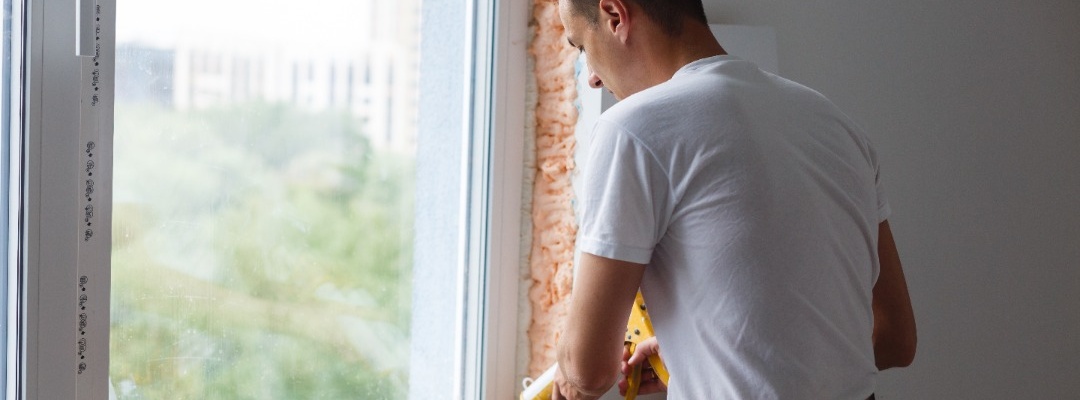Retrofitting Your Windows: A Step-By-Step Guide
Windows are an essential part of any home, providing light and fresh air while creating an important connection between the inside and outside worlds. Retrofitting your windows can offer many benefits, including enhanced energy efficiency, comfort, and aesthetics. In this guide, we will go step-by-step through retrofitting your windows, from assessing your current windows to choosing the right method to prepare for the retrofitting process.
Why Retrofit Your Windows?
Before delving into the nitty-gritty of retrofitting, it is essential to understand why it might be worth the effort. Retrofitting your windows provides many benefits, including energy efficiency, improved comfort, and aesthetics.
Energy Efficiency Benefits
Windows can be some of the most significant sources of energy loss in a home, especially if they are single-pane or if the frames are old and leaky. Retrofitting can help address these issues, decreasing your home's energy demands and lowering your energy bills.
The U.S. Department of Energy estimates that homeowners can save up to $465 annually by retrofitting their windows with energy-efficient options. This means retrofitting can pay for itself in just a few years, making it a smart investment for any homeowner.
Improved Comfort and Noise Reduction
Retrofitting can improve your home's comfort by reducing air drafts and noise pollution. This can create a more peaceful and relaxing living environment, making your home more enjoyable.
Retrofitting can be especially beneficial for those who live in noisy urban areas. Soundproof windows can significantly reduce noise pollution, making sleeping and concentrating at home easier.
Enhanced Aesthetics and Property Value
Lastly, retrofitting can enhance the aesthetics of your home, both inside and out. Updating your windows can dramatically change the look of your home, adding a fresh and modern touch. Additionally, retrofitting your windows can increase your property's value, which is essential if you plan to sell your home.
According to a study by the National Association of Realtors, window replacement projects can recoup up to 80% of their cost in added home value. This means that retrofitting your windows can make your home more comfortable and energy-efficient and be a smart financial decision in the long run.
Assessing Your Current Windows
Before deciding on the best retrofitting method, you must assess your current windows. Evaluating your windows will determine whether they need retrofitting or a full replacement. Retrofitting your windows can help you save money on energy bills and improve your home's overall energy efficiency.
Several factors to consider when assessing your current windows, including window types, materials, and performance. By evaluating your windows, you can make an informed decision about the best course of action.
Identifying Window Types and Materials
Firstly, it is essential to understand the different types of windows and their materials. Depending on your home's age, you may have various windows, including single-hung, double-hung, casement, or picture windows. Each window type has its advantages and disadvantages, and understanding the differences can help you determine the best retrofitting method.
Window materials vary, with common options including wood, vinyl, fiberglass, and aluminum. Each material has unique properties, such as durability, energy efficiency, and maintenance requirements. Knowing the type of window and material, you have can help you determine the best course of action.
Evaluating Window Performance
Secondly, evaluating the performance of your windows is crucial. During the evaluation process, look for any signs of air leaks, drafts, moisture, condensation between the panes, or any visible signs of damage. These signs can indicate that your windows are not functioning correctly and may require retrofitting or replacement.
Additionally, consider the age of your windows. Older windows may not be as energy-efficient as newer models, costing you more money in energy bills. Upgrading to newer, energy-efficient windows can help you save money over time.
Determining the Need for Retrofitting
Finally, decide if your current windows require retrofitting based on your performance evaluation. If they do, identify which retrofitting method is best suited to your needs.
Several retrofitting options are available, including weatherstripping, caulking, and adding storm windows. Weatherstripping and caulking can help seal any air leaks, while storm windows provide an extra layer of insulation. Each method has advantages and disadvantages, and the best option for you depends on your specific needs and budget.
By assessing your current windows and determining the best course of action, you can improve your home's energy efficiency and save money on energy bills over time.
Choosing the Right Retrofitting Method
Once you have assessed your current windows and determined the need for retrofitting, it's time to choose the right method for your home. Retrofitting your windows can help reduce your energy bills, increase your home's comfort, and improve the overall appearance of your home.
Window Film Installation
Window film installation is a popular retrofitting option that involves applying a thin film to the inside of the window. The film reduces heat gain during the summer and heat loss during the winter, making your home more comfortable year-round. The film can also protect your furniture and flooring from fading due to UV rays. Window films come in various shades and colors, so you can choose one that complements your home's interior and exterior.
When choosing a window film, it's important to consider its quality and durability. High-quality films can last up to 20 years and provide significant energy savings. Some window films are scratch-resistant and easy to clean, making them a low-maintenance retrofitting option.
Weatherstripping and Sealing
Weatherstripping and sealing are two simple retrofitting methods that can help improve your current windows' performance. You can reduce air leaks and drafts by sealing gaps around the window frame and weatherstripping the sash and frame. This can help keep your home warmer in the winter and cooler in the summer, reducing your energy bills and increasing your home's comfort.
When weatherstripping and sealing your windows, it's important to use high-quality materials to withstand the elements. Silicone or rubber weatherstripping can seal gaps around the window frame, while foam weatherstripping can seal gaps in the sash and frame. Caulk can also be used to seal gaps around the window frame and trim.
Adding Storm Windows
Adding storm windows is another retrofitting option to improve your current windows' performance. By fitting an additional window frame outside your existing windows, you can create an insulating layer that reduces heat loss, air leaks, and noise pollution. Storm windows can also protect your existing windows from damage caused by severe weather.
When choosing storm windows, it's important to consider the materials used and the quality of the installation. High-quality storm windows can last up to 30 years and save energy. Some storm windows are also designed to be easy to clean and maintain.
Full Window Replacement
If your current windows are beyond repair or you want to update the look of your home, a full window replacement might be required. This retrofitting method involves removing the old windows and replacing them with new, energy-efficient windows. Full window replacement can save energy and improve your home's appearance.
When choosing new windows, it's important to consider the window's energy efficiency rating, frame material, and style. Energy-efficient windows can help reduce your energy bills and increase your home's comfort, while different frame materials can provide different levels of durability and maintenance. Window styles can also affect your home's appearance and functionality.
Choosing the right retrofitting method for your home depends on your budget, goals, and the condition of your current windows. Consulting with a professional can help you determine the best retrofitting option for your home and ensure that the retrofitting is done correctly.
Preparing for the Retrofitting Process
Finally, once you have decided on the best retrofitting method for your windows, it's time to prepare for the retrofitting process. Retrofitting your windows can help you save energy and money and improve your home's overall comfort.
Before you begin the retrofitting process, it's important to consider the different retrofitting methods available. Some popular retrofitting methods include adding weatherstripping, caulking, and installing storm windows. Each method has its benefits and drawbacks, so choosing the method that best suits your needs and budget is important.
Gathering Necessary Tools and Materials
Depending on your chosen retrofitting method, you may need specific tools and materials. For example, if you install storm windows, you will need a drill, screws, and a screwdriver. If you add weatherstripping, you may need a utility knife and a caulking gun. Ensure you have all the necessary tools and materials before beginning retrofitting.
Measuring Your Windows
When retrofitting your windows, you must measure them accurately. Measuring your windows ensures that the retrofitting method suits your size, reducing the risk of any retrofitting errors. To measure your windows, you will need a measuring tape. Measure the width and height of your window frame, as well as the depth of the frame. This will help you determine the size of the retrofitting materials you need.
Ensuring Safety Precautions
Lastly, when retrofitting your windows, safety should always come first. Ensure you take the necessary safety precautions, such as using protective gear when handling glass or tools and avoiding working in adverse weather conditions. If you are unsure how to safely retrofit your windows, consider hiring a professional to do the job for you. A professional can ensure that the retrofitting process is done safely and correctly.
By following these steps and taking the necessary precautions, you can successfully retrofit your windows and enjoy the benefits of a more energy-efficient and comfortable home.
Conclusion
Retrofitting your windows can be a worthwhile investment, providing many benefits to your home. From improved energy efficiency to better aesthetics, retrofitting can enhance your home's comfort, look, and value. By following this step-by-step guide, you can retrofit your windows confidently, ensuring that your home will be a comfortable, safe, and energy-efficient haven for years to come.
Call us or contact us to request a free estimate to discuss pricing and availability.


